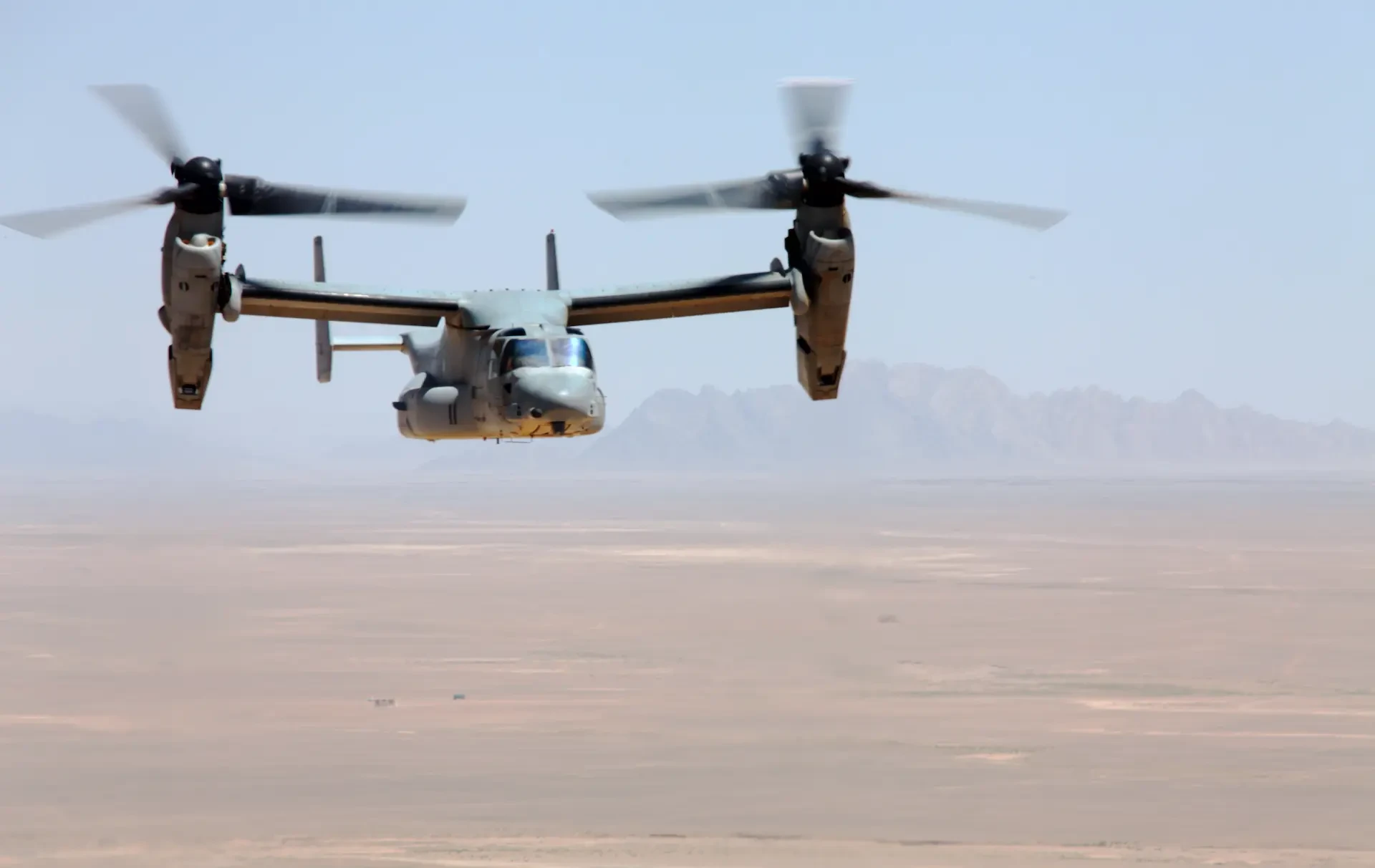Now the MV-22 is an integral part of the US military, what about those pilots looking to transition from the MV-22 to the Leonard AW609?
Tom Dailey examines the considerations to be made for a niche group of pilots.
Rocky Start
It was once projected that the Marine Corps’ MV-22 Osprey would soar over the skies of North Carolina by December 1996, but the Marine Corps Air Station New River would not welcome this new aviation paradigm until 2007. Fast forward a couple of decades, and the MV-22 has finally fulfilled its promise and demonstrated its true combat effectiveness combining the capabilities of a helicopter and a fixed-wing aircraft. Since 2007, the MV-22 Osprey has provided military aviation with enhanced mobility and flexibility for various missions, including troop transport, logistics support, and close air support. But it's been a steep learning curve and, occasionally, a rough ride for the Osprey. The aircraft has been used as an inter-service and political football, which, combined with it being 'different', has led to an almost unprecedented amount of scrutiny surrounding every mishap. In the pre-Social Media and 24-hour news era, aircraft now seen as robust and reliable, such as the UH-60 Black Hawk and CH-47 Chinook, had comparable or worse accident histories.

Vertical Take-off and Landing (VTOL) capability allows an aircraft to lift off and land without requiring a traditional runway and is usually associated with helicopters. Over time, VTOL has also been adopted by various fixed-wing aircraft, but, notably, all have been military designs - and the majority of VTOL 'promising prototypes' have not resulted in either production or operational success. The first truly successful 'powered lift' design was the British-designed Hawker Siddeley (later BAE Systems) Harrier, which served as a pioneer within fixed-wing aviation with its VTOL capabilities being employed for ground attack and reconnaissance missions. The Harrier's ability to operate independently from large, fixed infrastructure was seen as an important attribute during the Cold War, where airfields would be prime targets.
Increasingly, such ability is in demand today as the West again confronts the spectre of peer-on-peer warfighting. The Harrier's successor, Lockheed Martin’s F-35B version of the Joint Strike Fighter, fulfils the role of leading VTOL fighter, bringing the ability to operate from austere strips and small ships up to date - but surpassing the Harrier comfortably in terms of speed, stealth, and sensors. Until completely phased out by the F-35B, the Marine Corps Harrier force will continue to support Marines from the deck of the Corp's Amphibious ships, but the design of those ships will inevitably compromise some of the aircraft's potential. Taking off via a short take off run increases the amount of payload the Harrier can launch with, but during the recovery and landing phase, even at lighter weights, the Harrier consumes more fuel than it would if it had the ability to utilize a short runway or deck. Therefore, the decision-makers must judiciously determine how to optimize mission parameters while considering both fuel efficiency and the ability to transport necessary weaponry. 'Transport weaponry' also includes factoring in any unexpended ordnance when calculating recovery fuel loads and aircraft performance. During the interventions in the Former Yugoslavia in the 1990s, for example, UK Harrier's routinely had to jettison expensive weapons to reduce mass to a safe landing weight that could be sustained in the hover, especially in the warmer Summer months. In many respects, the UK's situation was worse, as the 'ski-jumps' fitted to the Royal Navy's Invincible class light carriers enabled the aircraft to get airborne with some 3000lbs of additional payload vice a 'flat deck’, When USMC AV-8B Harrier pilots embarked upon the Invincibles, or similar designs deployed by the Italians and Spanish, they were reportedly 'staggered' by the difference the optimal 12-degree ramp made. The USMC continues to eschew the ramp as it cuts into the number of helicopter spots available - an understandable compromise given the primacy afforded the assault mission by the Corps.
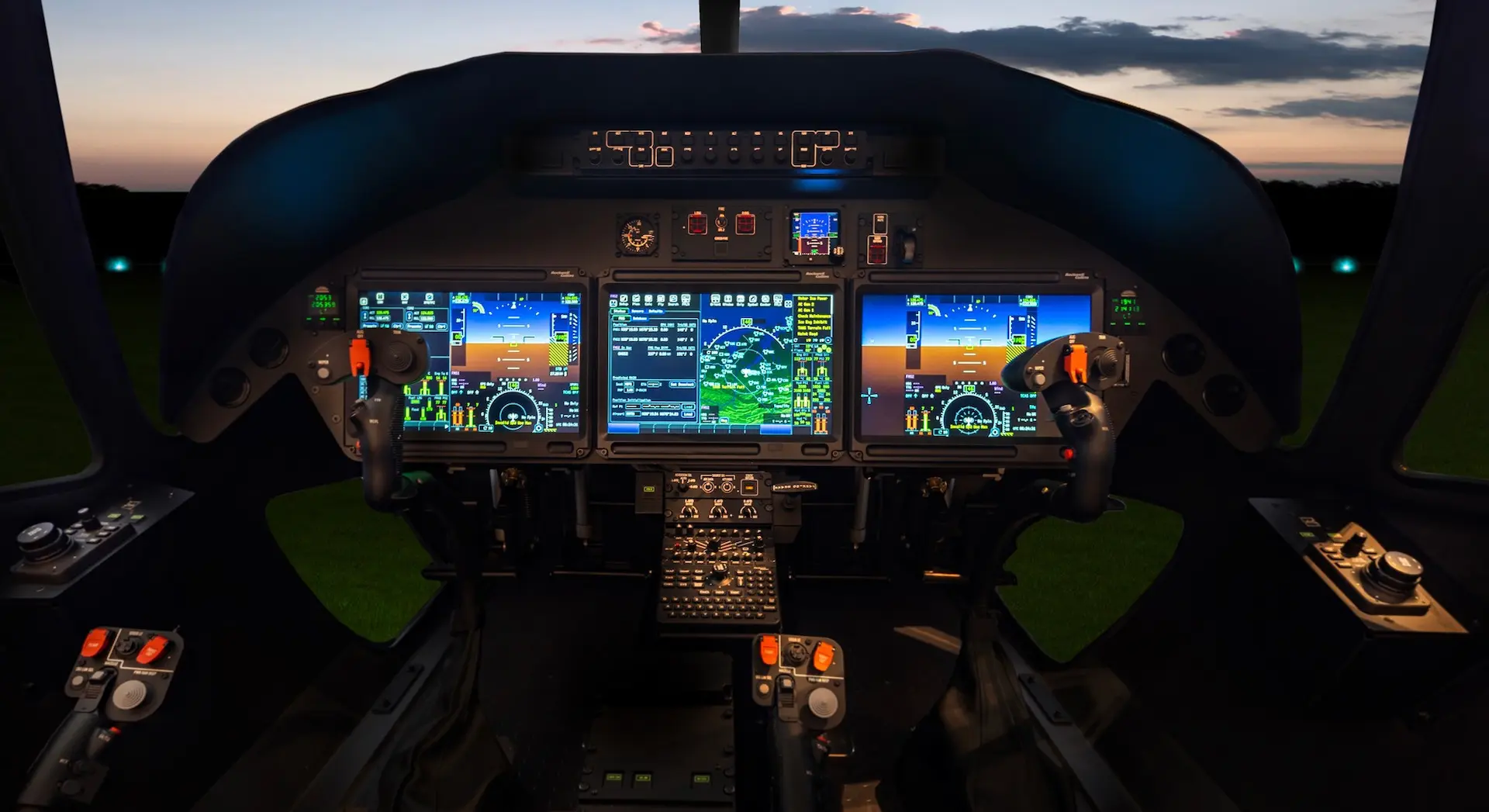
VTOL is hard, powered lift, even harder. But sometimes the perceived benefit makes the 'hard yards' in development, and associated risk and cost worthwhile. A platform that offers the ability to hover and operate from small pads or decks, yet cruise at the speed of a turboprop airliner, is of clear interest to the military.
Civilian VTOL
Soon, however, decision-makers in the corporate sectors will face a similar choice, but they will need to strike a balance between cost and capabilities; they must prioritize both fuel efficiency and the capacity to transport goods and products, not weapons. For a High Net Worth individual, or a corporate entity, the likelihood is they currently run a small 'fleet' of corporate travel platforms. Typically, this will include an executive helicopter for darting in/out of urban areas, a small turboprop (think King Air) for short-medium travel (often in concert with the helicopter) and a Business Jet for long range, even intercontinental travel.
The appeal in combining, say, the costs of an S-76 helicopter and a King Air into one platform, and preventing the need to switch between platforms is understandable. Less 'hassle' for the executives, less maintenance and crew requirements for the fleet manager.
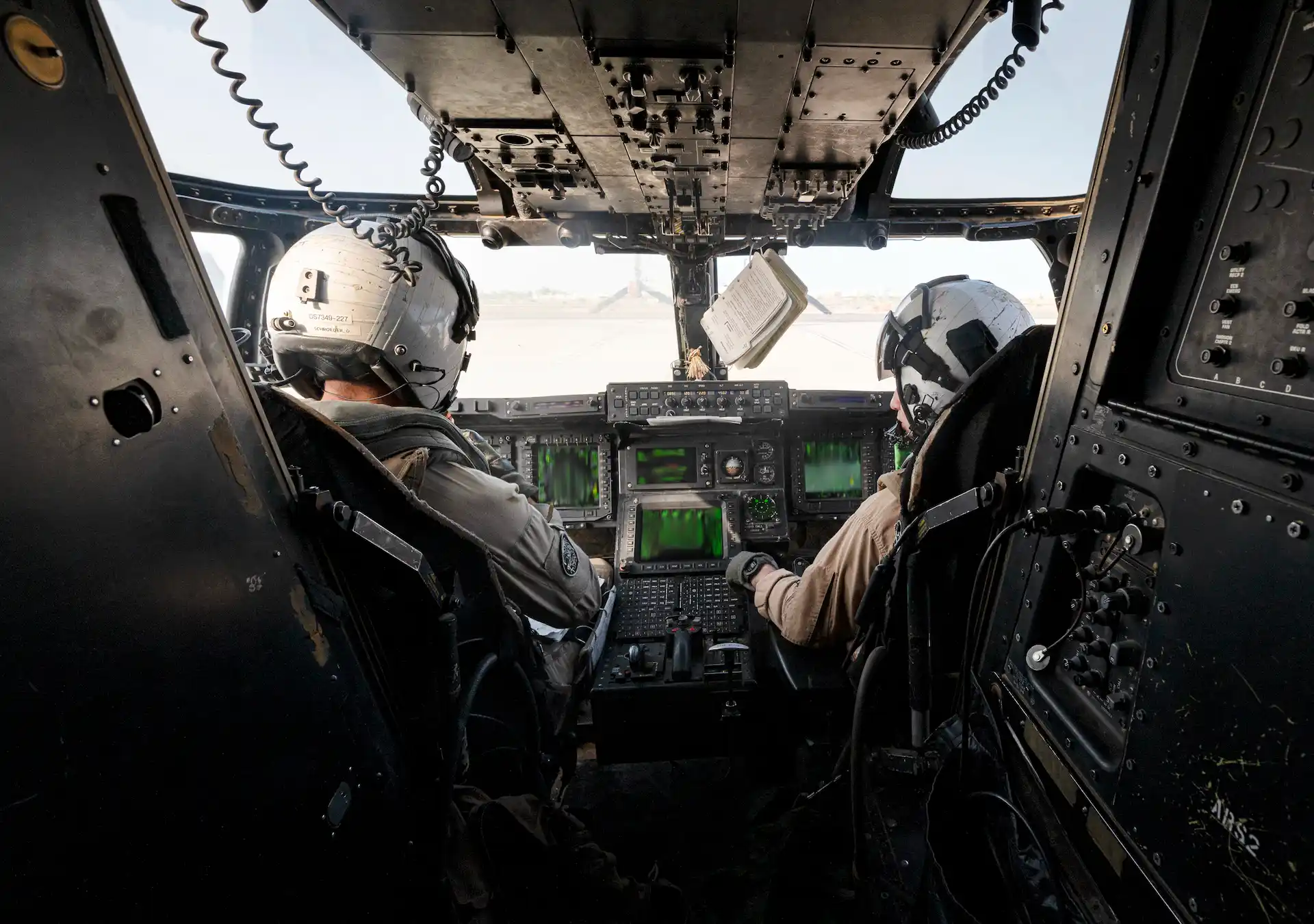
Replacing the corporate Gulfstream or Global with a jet VTOL aircraft is unlikely in the medium term, but then Bell is under contract by the USAF to develop a hybrid engine/rotor design against a High-Speed VTOL (HSVTOL) requirement. The concept is to take off and land via rotor power, but then when accelerating to the cruise, declutch the rotors and use the turbines as 'pure' jets for thrust with the wing taking the lift burden, and the rotors stopping, folding, and then stowing to minimise drag. Sounds like a fantasy? Well, Bell have just released images of the first prototype engine/rotor system undergoing trials, so such a concept is being seriously studied, but unlikely to be a feature on the civil scene for decades yet.
AW609
Although the practical implementation of VTOL powered lift technology has yet to materialize successfully in the commercial sector, there is hope for its success in the near future through a partnership between Leonardo Helicopters and the Bristow Group. Together, they aim to introduce the first powered lift aircraft into the civilian market, the AW609 tilt rotor. This collaboration reflects the ongoing efforts to bridge the gap between military and commercial applications of VTOL technology.
The Leonardo AW609, formerly the AgustaWestland AW609, and prior to that the Bell/Agusta BA609, is hoping to fill the civilian VTOL void by becoming the first commercially produced and certified tilt-rotor aircraft. If successful, the collaboration between Leonardo and Bristow will result in a major paradigm shift to the aviation market.
Picture the convenience for corporate travel between helicopter pads separated by 1000 nautical miles. While long journeys across the Atlantic or between coasts will continue to rely on larger corporate jets or commercial airlines, the realm in between may soon be dominated by the AW609. Additionally, the AW609's fuel consumption won't undermine the advantages of vertical take-off from designated locations instead of relying on runways.
Once airborne, the AW609 will cruise at higher speeds, and at higher altitudes, offering greater fuel efficiency compared to helicopters, as well as the ability to fly 'over the weather', exploit favourable high-altitude winds for improved range and flight times, and to hold more robust IFR diversion options - especially important if the facility that's the planned destination is isolated. Helicopter IFR planning is difficult due to relatively low fuel fraction on most VIP civil platforms, slow cruise speeds and often limited anti-icing capability. Coupled with a restricted ceiling, it often leaves executive helicopters with no viable IFR option, and if the conditions do not permit VMC flight to be maintained, the trip will need to be cancelled - or the crew put under pressure to operate beyond their capability. The AW609 promises to bring a huge improvement in flight planning, operational utility, and flight safety in poor weather. Its Direct Operating Costs (DOCs), in terms of fuel, consumables, servicing and flight crew salaries, are expected to align broadly with those of the afore mentioned King Air, boasting similar turbo-prop efficiencies, but with a small delta for servicing the more complex transmission system.
.webp)
Assumption – but not so fast
Interestingly, there may be an assumption that a former military MV-22 pilot would seamlessly transition to flying the AW609. However, this assumption would be incorrect because these aircraft do not share the same flight controls. During the process of researching the human factors of flying the MV-22, a Bell Engineer was asked, "why do the MV-22 and the Bell 609 have dissimilar flight controls," and the response was, "the customer."
Most aircraft accidents (military, commercial, and general aviation), tend to occur during the take-off and landing phases of flight. These stages of flight are critical in aircraft operations due to their proximity to the ground and the intricate interplay of various factors; in aviation, this region is referred to as the "Terminal Area." Although tilt-rotor aircraft will only function like a helicopter for a brief duration within the terminal area, this phase is often considered the most critical and vulnerable part of a flight.
It is not until the AW609 is clear of the terminal area, and has transitioned into an airplane mode, that the inherent risk associated with aviation is reduced. If nothing else, the risk of Mid-Air Collision (MAC) is highest in the Terminal Area - the ability for a tilt rotor to 'get up and go' and accelerate rapidly in terms of both speed and altitude will reduce that inherent MAC risk. Getting above the 'General Aviation Level' confers an additional degree of safety, as the 'enthusiastic amateurs', often with little electronic conspicuity and, perhaps, relatively poor lookout/Situational Awareness, will be well below. Most GA pilots inhabit the surface to 5,000ft airspace, only occasionally up to 10,000ft. Most helicopters have a restriction of 10,000ft placed on them due to the need to either be pressurised or carry supplemental oxygen. The AW609 is, as a would-be King Air replacement, fully pressurised, permitting its shirt sleeved passengers to comfortably ride at 25,000ft. Ultimately, however, the risks in the Terminal Area are inherent to every aircraft leaving the safety of the ground to take to the skies.
Controls
Considering the risk associated with the initial and latter stages of an approach or departure in the Terminal Area and coupling it with the knowledge that the tilt-rotor will still be in helicopter mode during this phase, the AW609’s flight controls are identical to that of a helicopter.
Although some airplanes have a yoke for steering, both airplanes and helicopters have a cyclic; adjusting this cyclic steers the aircraft up, down, left and right. In terms of power and thrust, most airplanes feature levers or handle type mechanisms to increase or decrease power/thrust. However, to increase power or speed, helicopters utilize a collective flight control. The terms "helicopters" and "collectives" often go together and are synonymous. However, the MV-22 Osprey diverges from this convention by employing a thrust control lever instead of a collective control.
Both helicopters and the AW609 feature a tube-type collective control. This collective control operates by pivoting the tube on a fulcrum point on the floor, and by pulling the collective upward power is increased for takeoff or increased speed. To decrease power or lift, such as for landing, the collective will be lowered vertically towards the floor of the aircraft; it is a pushing away muscle movement to land. Conversely, to increase power in an MV-22, the pilot must push a handgrip away and horizontally, and to decrease power in the MV-22, the handgrip must be pulled back. Although not definitive, these processes in the MV-22 do closely resemble a good example of negative habit transfer with respect to the AW609.
Manufacturers, engineers, experts in aircraft design, aerodynamics, and aviation safety professionals collectively agreed - and created the AW609 to function as a helicopter in the terminal area. It is not known or understood why those in decision-making positions ignored aviation safety trends or logic and requested hybrid flight controls for the MV-22. Fortunately, the combat hardened veterans flying the Osprey today only know its flight controls, so the hybrid flight controls in the MV-22 represent no risk to aviation safety.
Unfortunately, those same veterans will need to learn how to fly a helicopter after retiring before seeking employment as an AW609 pilot, because they will need to relearn years of MV-22 conditioned muscle memory and instincts.
The issue of Flight Crew Licencing (FCL) for the AW609 has been almost as lengthy as the certification process. As noted above, it's not simply a case of permitting V-22 pilots a 'free pass' (plus technical differences) as there are significant deltas in the PIlot/Vehicle Interface (PVI) between the V-22 and AW609.
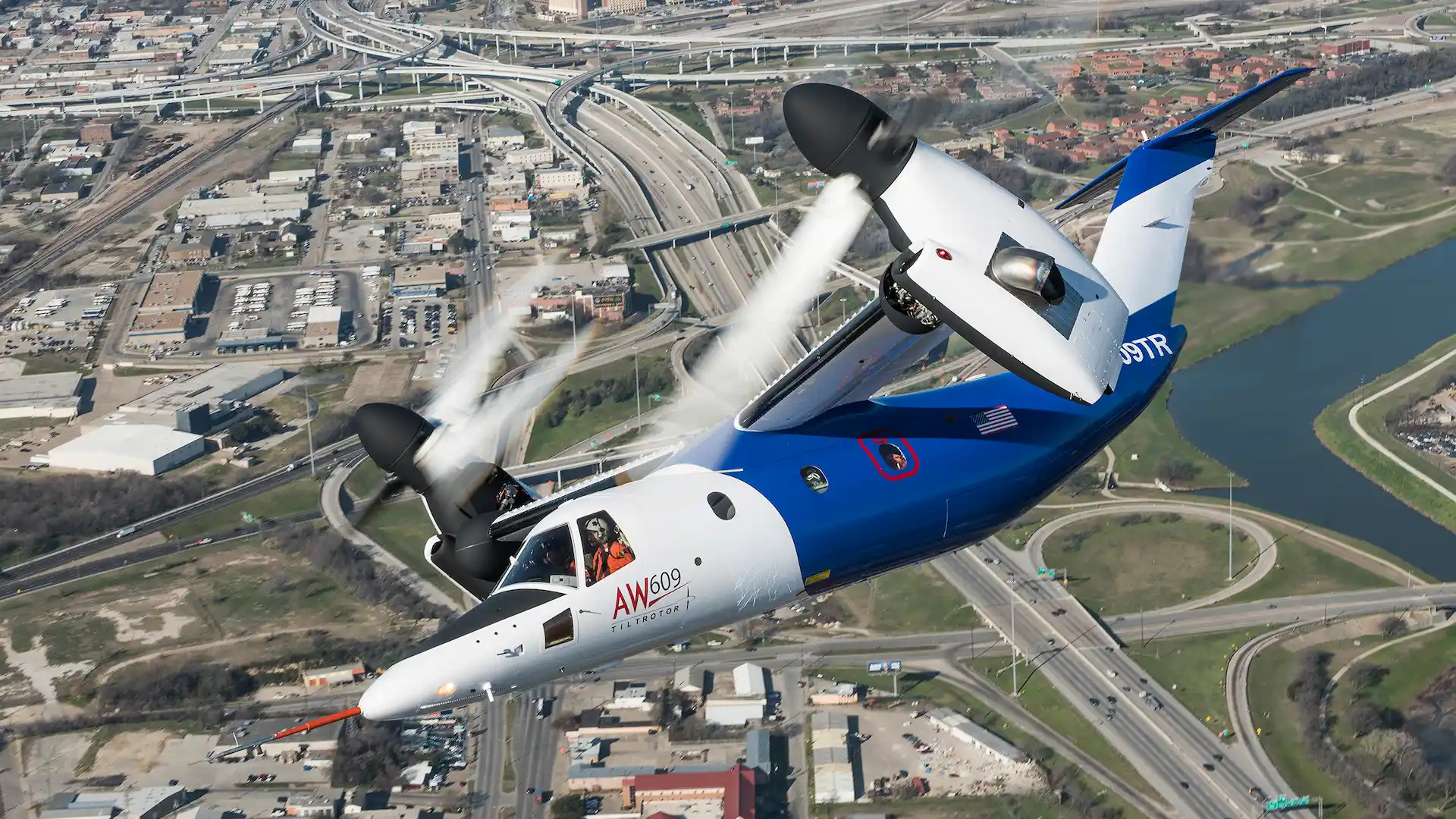
The USMC, as currently the largest users of tilt rotors in the world (not just the US DoD), have primacy over tilt rotor training. Would be V-22 pilots from the Navy and Marine Corps, after initial training and assessment are 'streamed' to the V-22, then complete a fixed wing turbo-prop syllabus on the C-12 (a military version of the King Air) before basic helicopter training. This combination prepares the pilot for operating an aircraft at both high speed / high altitude and in the low-speed ground cushion and hover. Pilots from the USAF and Japan then join their brethren from the Navy and Corps on VMMT-204, the V-22 'school house', at Marine Corps Air Station New River, to qualify on the aircraft.
The USMC will, however, not be the largest user of tilt rotors for much longer. The decision by the US Army to select the Bell V-280 Valor 'Gen 2 Tilt Rotor' as the winner of the multi-$Bn Future Long Range Assault Aircraft (FLRAA), and the inevitable large production order, will almost certainly place the Army into this role. It would be sensible for the Army to look long and hard the lessons that the USMC have learned, but the V-280, at the moment at least, appears to employ a more conventional set of 'helicopter style' controls, featuring collective and cyclic inputs for the hover and low speed regimes, and a combination of 'flaperon' and 'ruddervator' for the airplane-mode cruise configuration, with a flight control system supported 'blend' during the conversion regimes[1]. Therefore, the Army will likely be able to stick with a helicopter bias to their training regime, which may be aligned closer to the needs of prospective AW609 operators.
Civil regulators examining the needs for FCL for powered lift are currently developing a new category to accommodate platforms such as the AW609, as well as the emerging products of innovative eVTOL / Urban Air Mobility (UAM) industry. Designed to be issued in 2024, potential AW609 operators await the Special Federal Aviation Regulation (SFAR) but given that each eVTOL (and the AW609) will likely employ unique PVIs, regulation and licencing will be via a Type, not Class, rating.
Until the SFAR is finalised, and operators know how they can either take an existing helicopter or turbo-prop pilot and convert them to the Powered Lift category, the only possible supply of pilots is from the outflow from the V-22 community - and, as noted earlier, there are some significant differences between the V-22 and AW609. Not every V-22 pilot will want to fly a AW609 either; for many, the VIP/Corporate charter lifestyle, with the lack of schedule and multiple uncertainties, will not be as attractive as the relative stability of the major airlines - a 'pull' made all the more attractive by the obstacles that the FAA have removed for tilt-rotor pilots, and the number of organisations offering a fully managed transition from a military to a civilian cockpit.
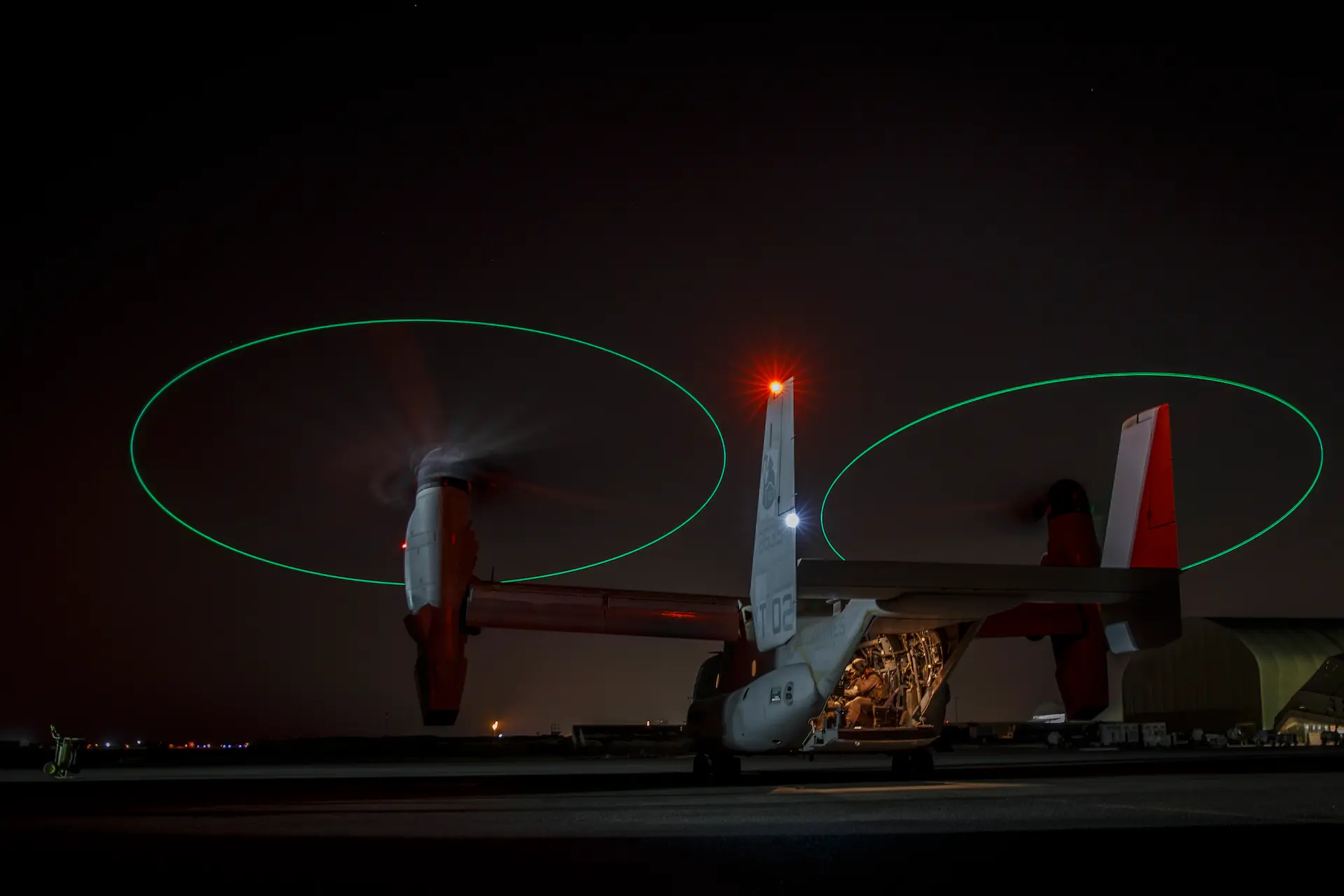
Therefore, the V-22 pilot will soon have a choice when they reach that 'stepping off point' from the military. If they elect to stay in the cockpit, the airlines will soon not be the default choice. As the AW609 gains traction in the market place, there will be many who find the lure of flying the 'Ferrari of the Sky' irresistible. Moreover, although still very much focussed on delivering the Engineering Manufacturing and Demonstration (EMD) phase of the V-280 FLRAA program, Bell is not ruling out the potential for a civil derivative of the Valor. If, and it's a big 'if', Bell has the capacity to certify a civil version of the Valor, the sheer numbers being purchased by the US Army could well drive the acquisition cost down towards that forecast for the AW609 (approx $25m). Bell and the Army continue to predict a cost of $43m per Valor, but that figure will include a significant amount for military-specific mission equipment, such as Aircraft Survivability Equipment and secure radios. Factor in that the V-280 has a much bigger fuselage than the AW609 (capable of carrying 14 troops over the AW609's nine passengers) and that price differential may prove acceptable - as might the 'buy American' nature of the Bell product, even if the AW609 is manufactured in Philadelphia.
One thing is for certain, the tilt rotor pilot of the future may have plenty of choice.
[1] 'Bell V-280 Hover Flight Dynamics Model Validation and Update with Flight Test Data', Lopez, Duffy, Tischler and Ruckel, presented to the VFS 77th Annual Forum, May 10-14 2021
 HOME
HOME


